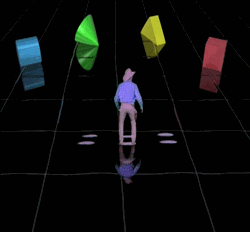 72 games into the Fustian Gaming Challenge, it may surprise you to learn that I am someone who cares about video game preservation.
72 games into the Fustian Gaming Challenge, it may surprise you to learn that I am someone who cares about video game preservation.
It’s just an accident of my own birth, but I have grown up with the video game medium as we know it: the Nintendo Famicom was literally born the same year as myself, and, appropriately enough, my grandfather owned and loved the hardware offering of the “previous” generation, the Atari. Some of my earliest memories are of playing (horrible Atari) Pac-Man and, later, Super Mario Bros. I got into fights with my first real friend over what was the proper distance one could sit from the television while playing Duck Hunt. As I grew older, I remember sleepovers involving staying up to watch Saturday Night Live by alternating lives on Castlevania 3, and later having entire “parties” based around playing Super Bomberman. I’ll admit that, as a result of all this, my video game collection started not as a concentrated effort to build a video game library, but because I simply couldn’t “trade in” that copy of (the awful) Friday the 13th, lest I feel like a jackass the next time Jimmy comes over and wants to see if we can finally beat that axe-wielding maniac.
I want to say it wasn’t until I was in my early twenties that I really considered video game preservation. At the time, the DVD format had just come in to its own, and it seemed like every “forgotten” hit of the 80’s was back in special edition form. Actually, when I think on it, I can tell you exactly when it happened: my college buddy Moko (owner of the tiniest TV in NJ mentioned in this article) was excited about the DVD release of Willow. Alright, truth be told, we were all kind of excited about it, but he was the one actually buying it, and I seem to recall we watched it with glee and made constant references to drunken brownies for the rest of the year. But you want to know what never saw a rerelease? Willow for the NES, a 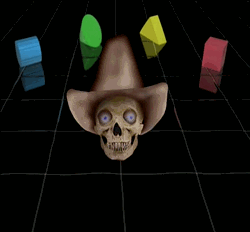 Capcom Zelda-like game that sucked up hours of my life during my younger years. It was, frankly, awful for a small child to play, because it was about as straight-forward as a Charlie Kaufman film, and its various RPG elements made just about as much sense to a young Goggle Bob as Synecdoche, New York would have. That said, with my newfound appreciation for Willow the movie, I would have loved to play Willow for the NES again as an adult, but… no dice, unless I wanted to hit any given seedy emulation site. Even beyond that, there was Willow the Arcade Game, also made by Capcom, which I had never seen before in my life, but is a damn fun game, and never saw a home release in any form. And, given how licensing works for video games, the odds of ever seeing these games on anything outside of a computer monitor are pretty dang low.
Capcom Zelda-like game that sucked up hours of my life during my younger years. It was, frankly, awful for a small child to play, because it was about as straight-forward as a Charlie Kaufman film, and its various RPG elements made just about as much sense to a young Goggle Bob as Synecdoche, New York would have. That said, with my newfound appreciation for Willow the movie, I would have loved to play Willow for the NES again as an adult, but… no dice, unless I wanted to hit any given seedy emulation site. Even beyond that, there was Willow the Arcade Game, also made by Capcom, which I had never seen before in my life, but is a damn fun game, and never saw a home release in any form. And, given how licensing works for video games, the odds of ever seeing these games on anything outside of a computer monitor are pretty dang low.
I’m sorry, where was I before I got distracted by Bavmorda? Ah yes, video game preservation. So it was somewhere in my early twenties that I decided to build a true “video game library”, with the capability of playing any video game worth playing as easily as pulling a book of a shelf. I had never traded in or discarded a single game in my life, so I already had a head start with the collection I had grown since my childhood, but now I decided to use some spare income to jockey on EBay and fill my shelves with every game I had ever rented or even heard of (which, thanks to the likes of Nintendo Power and Gamepro, was more than a few games). Again, by sheer accident of my birth year, the first time I had some significant disposable income coincided with a period of time when the old games were more “let’s get clear out the attic” cheap prices than “collector’s item” valuables that many games have graduated to today. And, no, before you ask, I don’t have any (well, many) of the insanely rare games like Little Samson (my own personal holy grail), and I’ve never given much of a flip about boxes or instruction manuals (have ‘em if they’re available, but not going out of my way). But, all told, I set out with a “shopping list” of essential classic games when I officially started this collection around ten years ago, and that list has long since been completed. See you next mission, EBay.
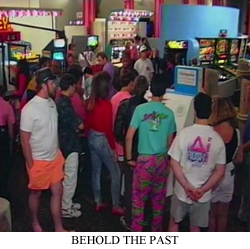 There is, of course, a giant gap in my video game collection, and that’s the arcade games. Like Willow Arcade mentioned earlier, there are a great swath of arcade games of varying quality that have never seen a living room. Yes, I just reviewed another game that had something like twenty arcade games on one disc, and I’m always down to grab the latest Midway or Taito collection of arcade games (even though half the time I’m just buying the same games over and over again), but much of what I loved in the arcades is forever out of reach. I must have sunk thousands of dollars into 90’s Beat ‘em Up cabinets over the years, but it’s only within the last console generation that we saw home versions of The Simpsons and X-Men, and the original Teenage Mutant Ninja Turtles arcade game is currently only available as a bonus on the PS2/Xbox/GC Teenage Mutant Ninja Turtles 2: Battle Nexus game, as the download version of the game alone has been removed from the digital marketplace, presumably thanks to previously mentioned licensing issues. And that’s just the big guns, so good luck playing a game of Golden Axe: The Revenge of Death Adder.
There is, of course, a giant gap in my video game collection, and that’s the arcade games. Like Willow Arcade mentioned earlier, there are a great swath of arcade games of varying quality that have never seen a living room. Yes, I just reviewed another game that had something like twenty arcade games on one disc, and I’m always down to grab the latest Midway or Taito collection of arcade games (even though half the time I’m just buying the same games over and over again), but much of what I loved in the arcades is forever out of reach. I must have sunk thousands of dollars into 90’s Beat ‘em Up cabinets over the years, but it’s only within the last console generation that we saw home versions of The Simpsons and X-Men, and the original Teenage Mutant Ninja Turtles arcade game is currently only available as a bonus on the PS2/Xbox/GC Teenage Mutant Ninja Turtles 2: Battle Nexus game, as the download version of the game alone has been removed from the digital marketplace, presumably thanks to previously mentioned licensing issues. And that’s just the big guns, so good luck playing a game of Golden Axe: The Revenge of Death Adder.
It’s a shame, too, because the arcades were, in their time, a shining bastion of creativity in the video game universe. Thanks to video game consoles, we tend to think of video game history as a straight, continually improving line for both graphics and gameplay, but in the arcades, amazing “playable cartoons” like Dragon’s Lair hit the arcades two years before “Jump Man” decided to save the Mushroom Kingdom. Police 911, an arcade light gun game that used motion sensors to allow the player to “dodge”, saw release in 2000, and while the consoles saw a gimped port, the arcade version pioneered the motion controls that would print money for Nintendo six years later on the Wii. The arcade was, for decades, a proving ground for new and exciting ideas, and anyone could take hold of the future for a few 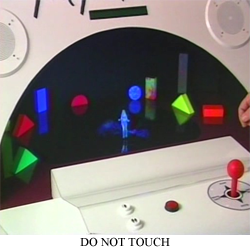 measly quarters. Now, those joysticks have long since gone to the scrapheap, and all those promised futures have been long since forgotten.
measly quarters. Now, those joysticks have long since gone to the scrapheap, and all those promised futures have been long since forgotten.
Hologram Time Traveler was a noble attempt to grasp one of those futures. The HTT arcade cabinet was a sight to behold: a short, fat machine that looked like something that could clean bowling balls squatted at a random corner of the arcade projecting a tiny digitized woman begging for rescue and quarters. Yes, HTT was one of the first games to use digitized actors to tell a story, and, more importantly, it projected the lil’ troop into holograms right there, with full voice acting and costumes appropriate for the time travel motif. Your hero was a cowboy, your princess was clad in space chic, and every time you died, there was some bonkers wizard waddling around and claiming to know what you did wrong.
I played the game once, and only once, in the arcade. HTT, likely due to the advanced technology involved, was an expensive machine, demanding at least fifty cents, maybe even 75. At a time when that sum could buy maybe a full five minutes of Ninja Turtles, I wasn’t quick to bite. It was also what I’ve always privately referred to as a “controlled” game, like Dragon’s Lair, Brain Dead 13, or practically the entire Sega CD library, that basically played a prerecorded video, and it was your job to press up, down, left, right, or shoot as is appropriate, pray you guess right, and make the video proceed unabated. Assuming you pressed the wrong button (or didn’t press the right button fast enough), a freaky skull would appear, and, bang, you’re dead. Unfortunately for the player, the game was built, from head to toe, to make you dead; and even went above and beyond the average arcade experience by including a slot machine “bonus stage” that was tremendously more likely to deplete your credits than increase your life count. Combine this all with the fact that there was an arcade game that featured Binky the Rabbit like right across the aisle, and, yeah, I wasn’t coming back any time soon.
But just because a game is terrible doesn’t mean it should be forgotten. We have the entire works of Tor Johnson available, and I assume The Room is going to be a viewing staple for a generation. Despite the costly and huge arcade hardware involved, and the obviously impossible to replicate for the living room holograms, Hologram Time Traveler did make its way to the television during the PS2 era. Yes, the game is still terrible, and, given its concessions for home release, it has only gotten worse, but the whole package is surprisingly worthwhile. The game is crap, but the disc itself contains interviews with the creator and news reports from the time of the game’s original release, and it all adds up to a lovely time capsule of the early 90’s and the arcade arms race that lead to so much innovation (and, incidentally, maybe the entire fighting genre). And, best of all, the game allows you to simply “watch” the game being played in a perfect run, which, given the difficulty of the game, was probably something only six people had previously ever seen.
available, and I assume The Room is going to be a viewing staple for a generation. Despite the costly and huge arcade hardware involved, and the obviously impossible to replicate for the living room holograms, Hologram Time Traveler did make its way to the television during the PS2 era. Yes, the game is still terrible, and, given its concessions for home release, it has only gotten worse, but the whole package is surprisingly worthwhile. The game is crap, but the disc itself contains interviews with the creator and news reports from the time of the game’s original release, and it all adds up to a lovely time capsule of the early 90’s and the arcade arms race that lead to so much innovation (and, incidentally, maybe the entire fighting genre). And, best of all, the game allows you to simply “watch” the game being played in a perfect run, which, given the difficulty of the game, was probably something only six people had previously ever seen.
As I write this, I am in the shadow of my Playstation 2 collection, a pile of DVD cases stacked on shelving that nearly reaches the ceiling. If I lived in a more earthquake-prone area, the coroner would inevitably conclude that my cause of death was, “crushed by video games, Neo Geo Battle Coliseum lodged in brain.” Be the OCD you want to see in the world. But you know what? Games like Hologram Time Traveler do make it seem worthwhile. This isn’t some one-and-done affair, a game that was snagged thanks to prerelease hype and then forgotten seven seconds after it received the sixteenth “Game of the Year” accolade that year; no, this is a piece of gaming history, preserved by people who genuinely seem to care about the medium. 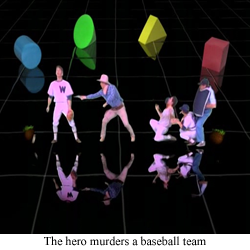 I might not ever actually play the game again, but it’s good to know that it’s there, that it’s available, and I can learn from its mistakes as easily as popping in a DVD.
I might not ever actually play the game again, but it’s good to know that it’s there, that it’s available, and I can learn from its mistakes as easily as popping in a DVD.
It might be a bad video game, but it is a good memory.
FGC #72 Hologram Time Traveler
- System: Arcade, Playstation 2. Okay, technically this isn’t a PS2 game, it’s actually a DVD (like, movie DVD) that has been modified to the point that the usual menu navigation keys on the remote work like a controller. Technically, you could “play” this game as easily on any given DVD player as the PS2, but the PS2 does seem to offer a better response time. If memory serves, this makes the PS3 impossible to use, though, as its button layout for playing movies is different. Another poor example of backwards compatibility.
- Number of Players: Two players alternating in the arcade, just one at home. No such thing as dual DVD remote controls… though that would make watching a movie with a five year old more interesting.
- So, you’re an arcade rat? I basically grew up on the boardwalk. Here’s a beach cam so you can watch that very boardwalk right now. You may still randomly see me on that camera, too, as I am physically incapable of change. Anyway, the boardwalk was always arcades to me, and my grandfather was always happy to oblige with, in retrospect, what must have been hundreds of dollars in quarters. I think I “beat” every worthwhile arcade machine from 8th Street to 12th (that… is a much larger area when you’re ten). I’m sure there will be at least one article in the future that will just be talking about local arcades. It will be exclusively for my amusement.
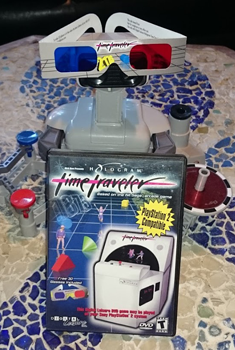 The goggles do nothing: This game also comes with a pair of 3-D glasses so you can enjoy the 3-D effect of holograms in your own living room. Come to think of it, how has this game not been ported to the 3DS?
The goggles do nothing: This game also comes with a pair of 3-D glasses so you can enjoy the 3-D effect of holograms in your own living room. Come to think of it, how has this game not been ported to the 3DS?- Favorite Time Period: I did wind up playing through the game for this article, and all the time periods are basically just “random dudes running around in costumes shouting”. It… loses something when you’re not being impressed by holograms. No matter, through it all, I preferred the “Magical” Time Period, as it allowed you to finally encounter that stupid wizard in a non you’re-already-dead setting.
- A brief downer aside: It occurs to me only as this article is about to be posted that my grandfather, mentioned earlier as a source of Atari and infinite quarters, passed away exactly four years ago today. It’s a complete coincidence that I would be writing an article that reminded me of him today of all days, so, in the name of certainly-not-irony, this article on not forgetting the past, good and bad, is dedicated to my grandfather, who was a source of particularly good moments in my past. Also, general tip for everybody, if you’re going to die, do it on a day that is already nationally remembered.
- Did you know? According to the news report included on the game, Hologram Time Traveler was the third best performing arcade game for 1991. While I can’t immediately find any sources for this, I’m going to have to go ahead and claim, based only on the whole of history, that Street Fighter 2, also released that year, was number one. Number Two? Uh… let’s say that was… errm… Was this the year you could play Super Mario World for thirty seconds in the arcade? Let’s go with that one.
- Would I play again: No. God no. I’m still kind of upset that I blew nearly a dollar on this in the arcades. I want my money back!
What’s next? Random ROB has chosen… Claymates for the SNES. Woof, get ready to be buried under a mountain of putty puns. Sculpt out some time in your schedule, and please look forward to it!
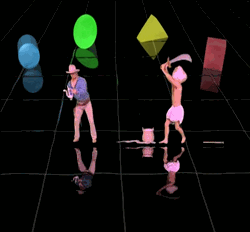
Early Shantae inspiration?
I am glad you captured the senseless murder of those baseball players. They didn’t even have the common dignity to turn into shrieking monsters like the rest of modern day level. Their only crime was playing baseball, which is punishable by death in the eyes of Time Traveler. I especially like that the umpire, seeing that two of his players have been murdered by a cowboy who was just farted out of the space-time continuum, simply runs out and ejects him from the game. He is nothing if not a professional.
And we’re completely ignoring the modern “gang bangers” that are just the most sheltered interpretation of street gangs that can be imagined…
[…] is more the pity, as emulation has had a tremendous impact on gaming and video game journalism. As I’ve mentioned before, I find video game preservation incredibly important, because you’re never going to get anywhere […]
[…] I’m a gamer that cares about videogames. It’s not about the physical cartridges or discs or the history of gaming or anything so concrete; no, I care about actual fake videogame people and concepts. At any given […]
I couldn’t sleep last night and I decided to google the weird game I had, like you, played once at an arcade. All I could remember from it was a terrifying skeleton that would shriek, “YOU SHOULD HAVE USED THE REVERSAL CUBE!” I can still close my eyes and see that sucker.
I found the gif you posted, and somehow it’s even scarier than I remember. I had to force myself to look at it again tonight (exposure therapy?).
Anyway, thanks for this post. I’d play this game again if i saw it! I remember being amazed by it at the time.
Always happy to unearth childhood traumas!
[…] a playable movie! It is a game that ostensibly tries to be a “videogame” (as opposed to, like, one of those “games” you can play with a DVD remote), but features real, human actors. Night Trap has “graphics” on par with your average Marvel […]
[…] So once I’ve got a rough idea of where I’m going, I shape that into something that resembles a completed article. Since I produce three of these articles a week, I don’t have time for such trifling concepts as “writer’s block”. I find it works best to, no matter what, get a spine of an idea, and then turn it into a skeleton that can eventually be modified into something worthwhile, like an angry skeleton, or a skeleton with magic powers. In a weird way, early articles wind up looking like peculiar letters to myself. Here, for example, is an early draft of Hologram Time Traveler: […]
[…] the same year is Hologram Time Traveler. I’ve discussed this game at length before, but to reiterate for anyone that can’t remember every precious word I’ve ever committed to […]